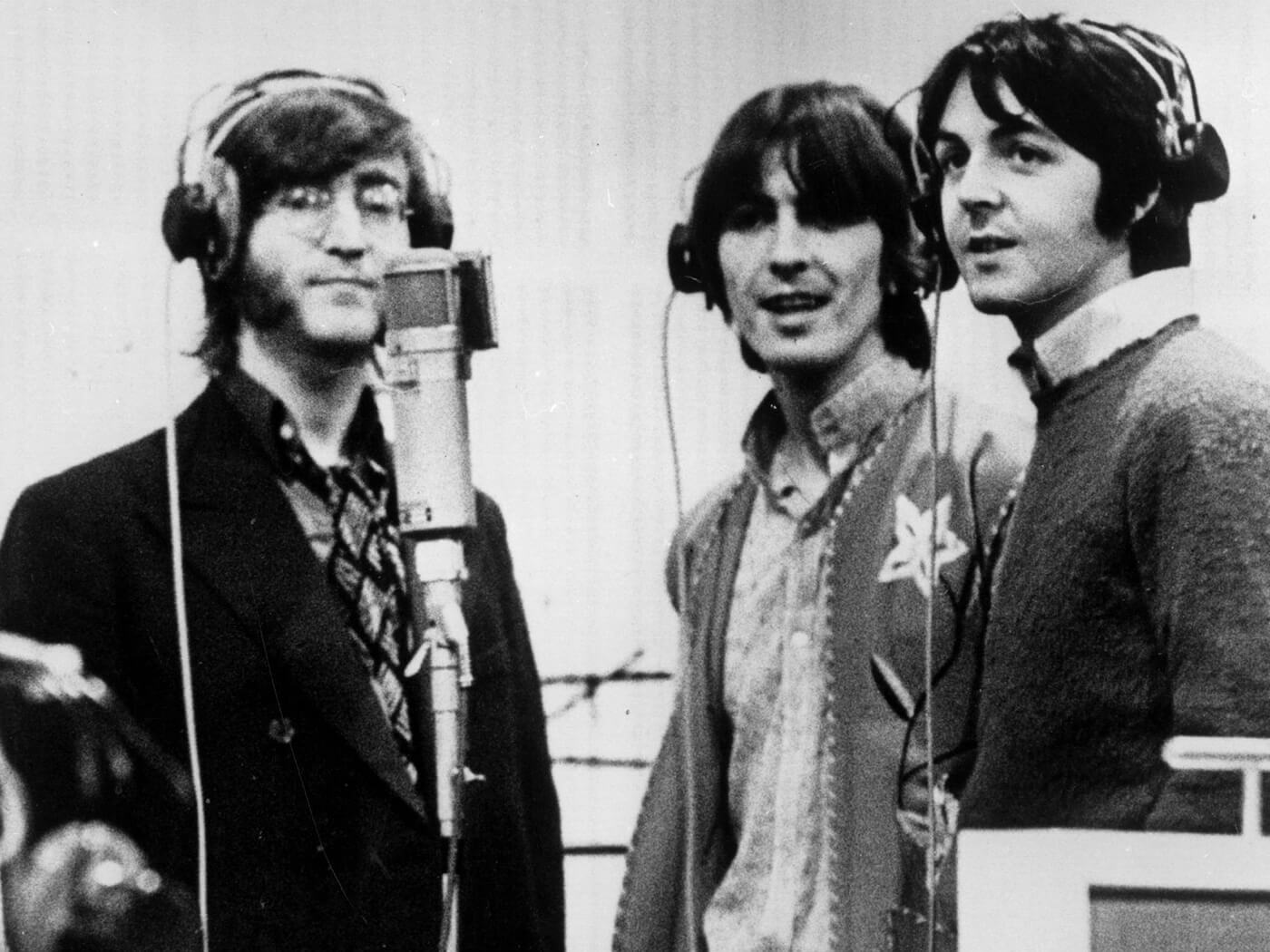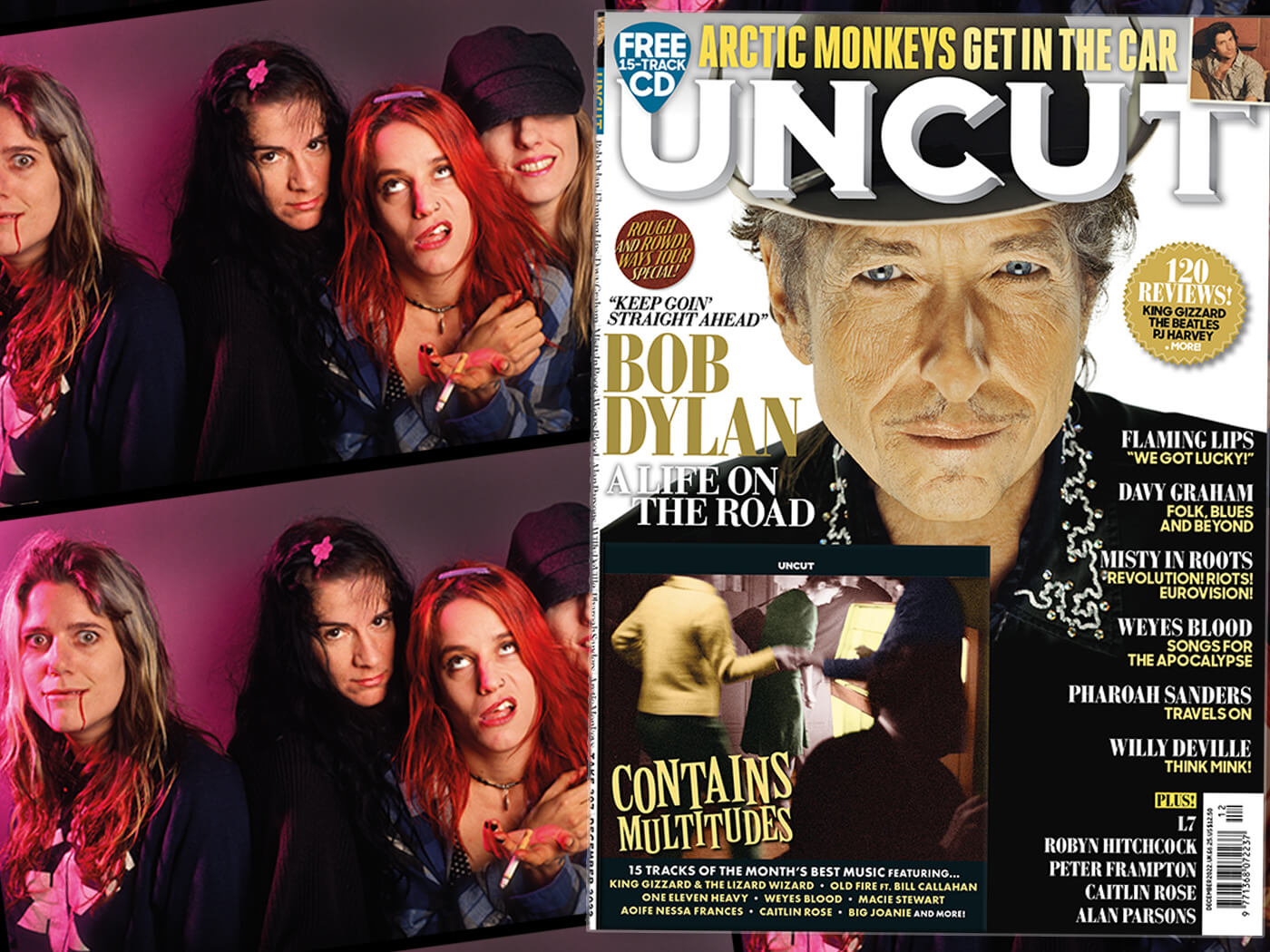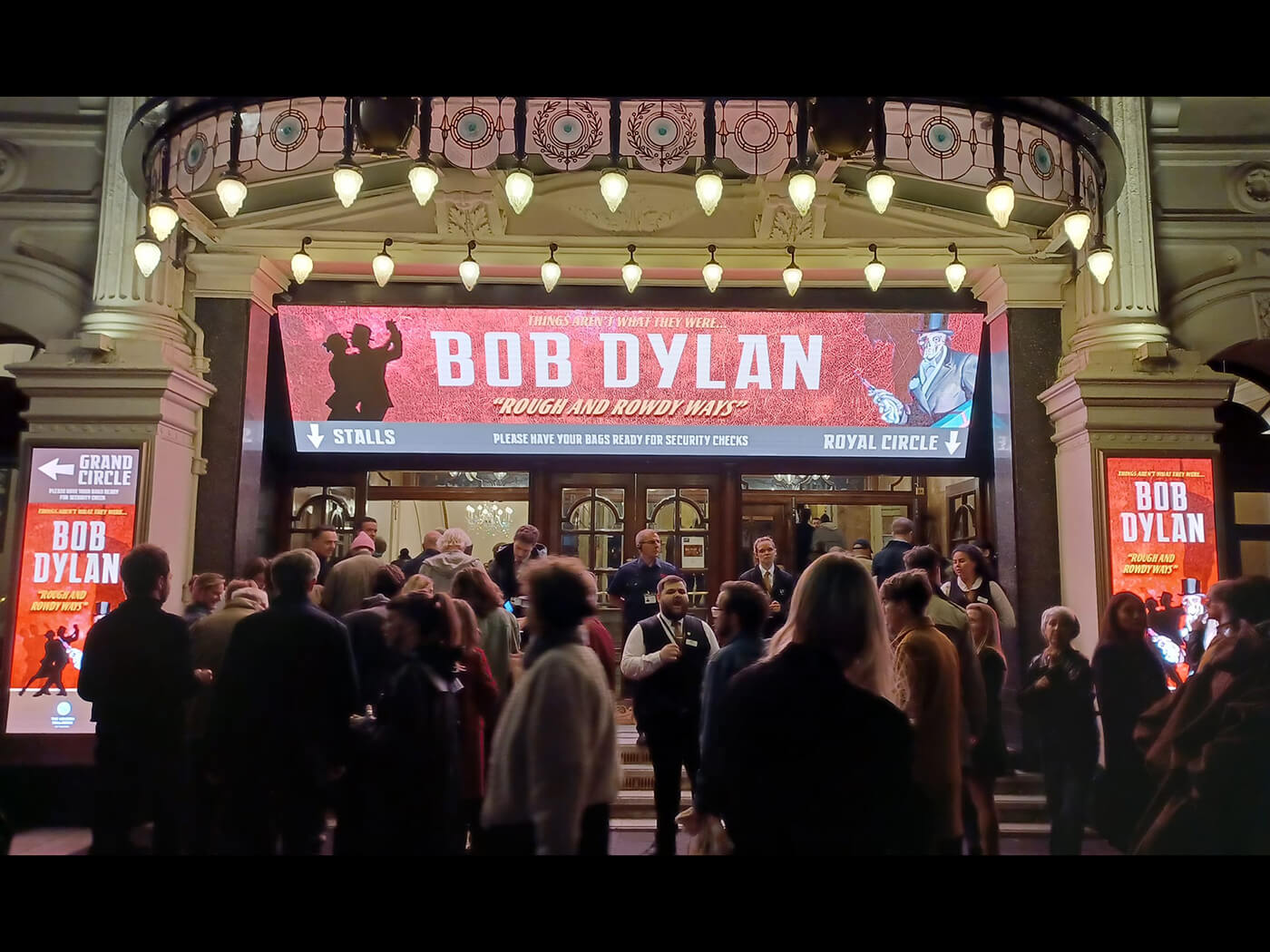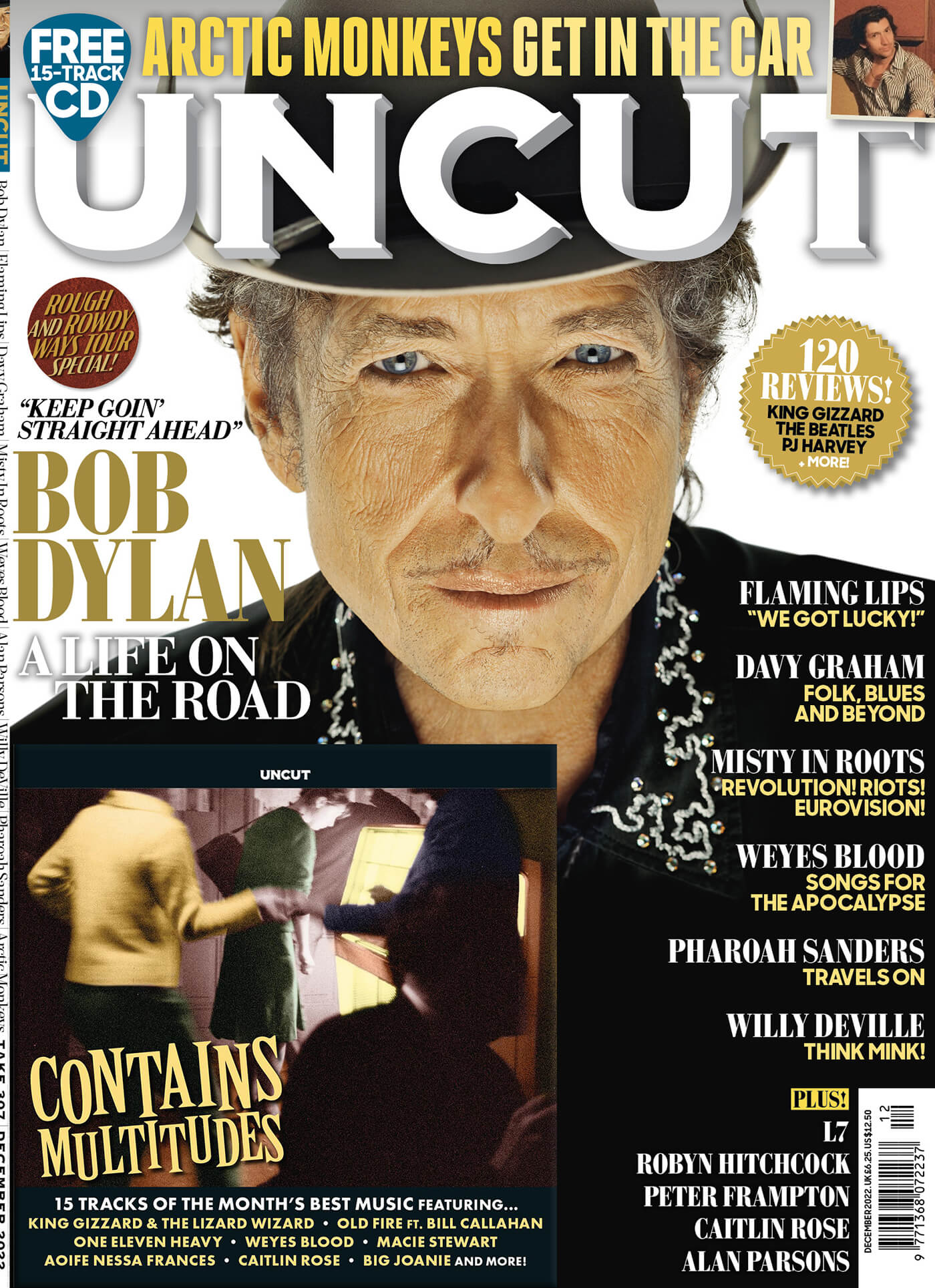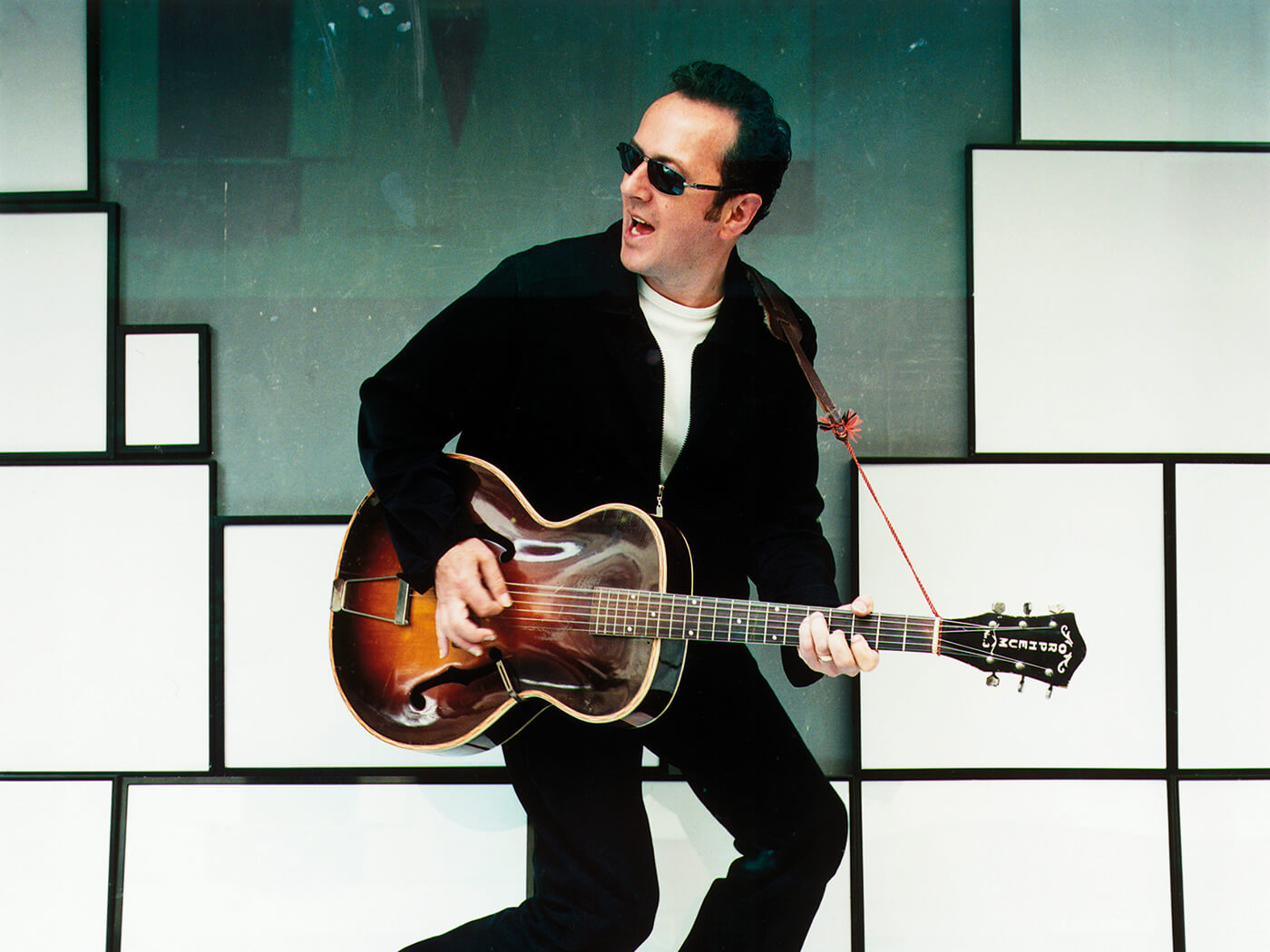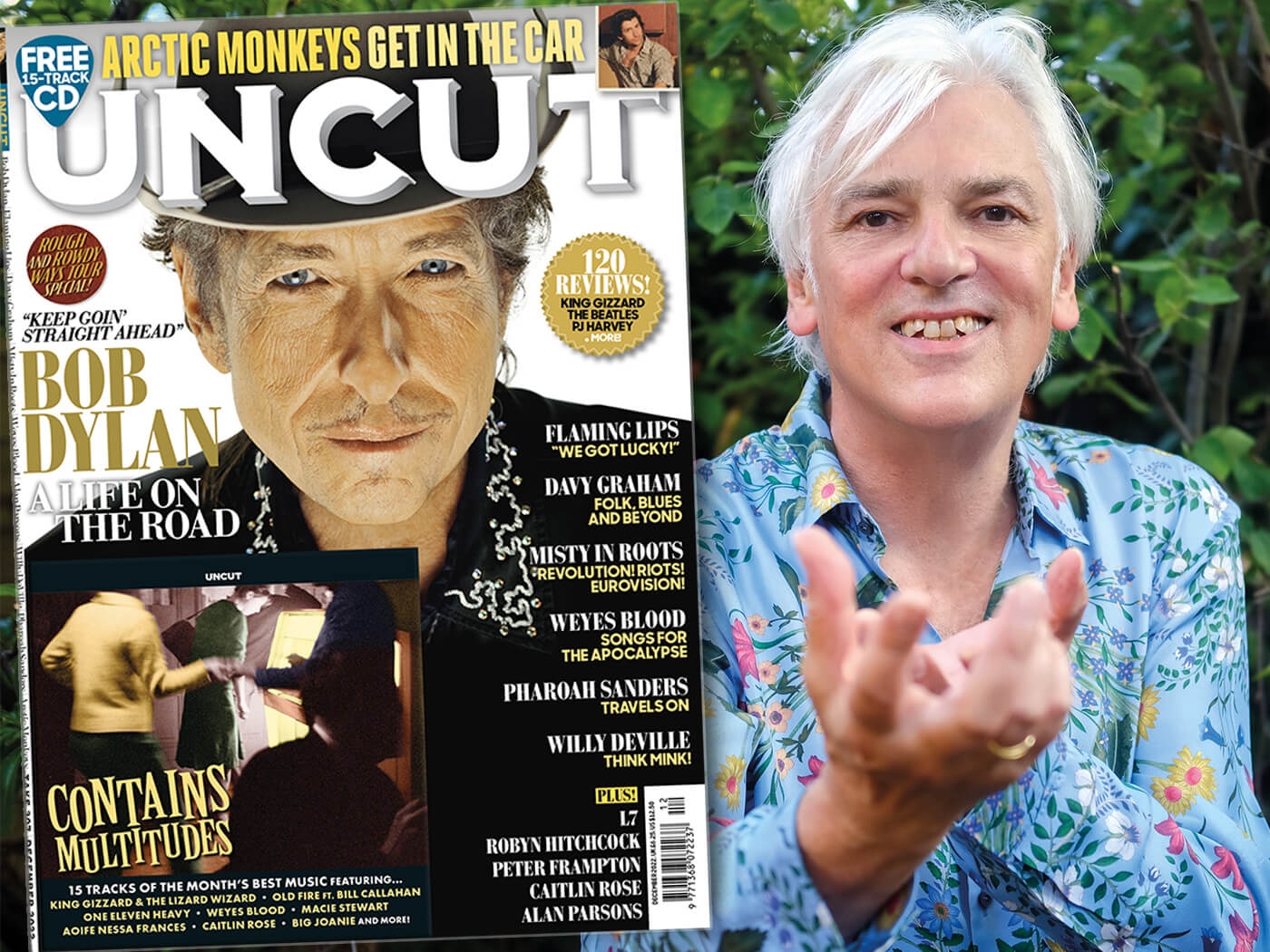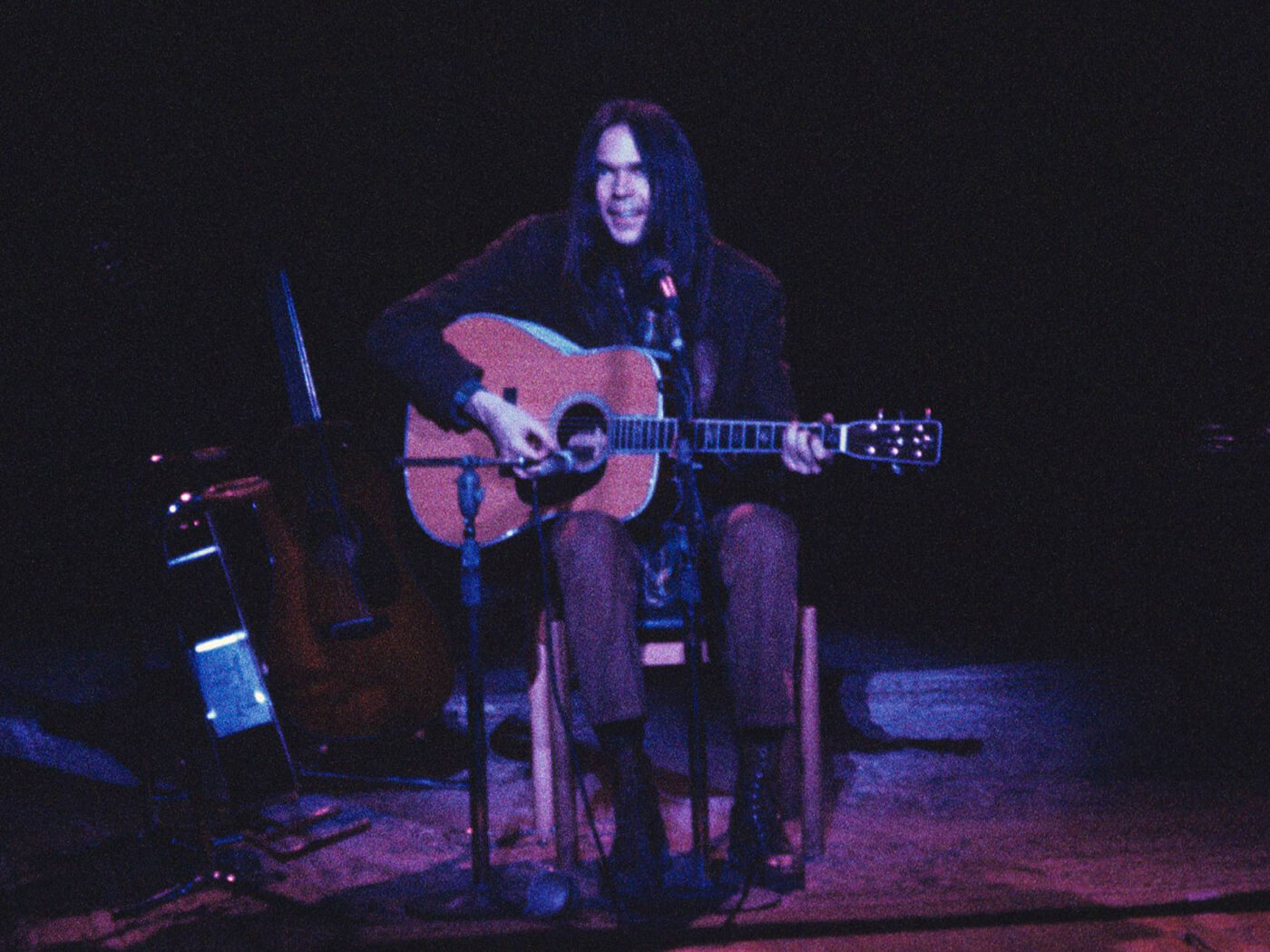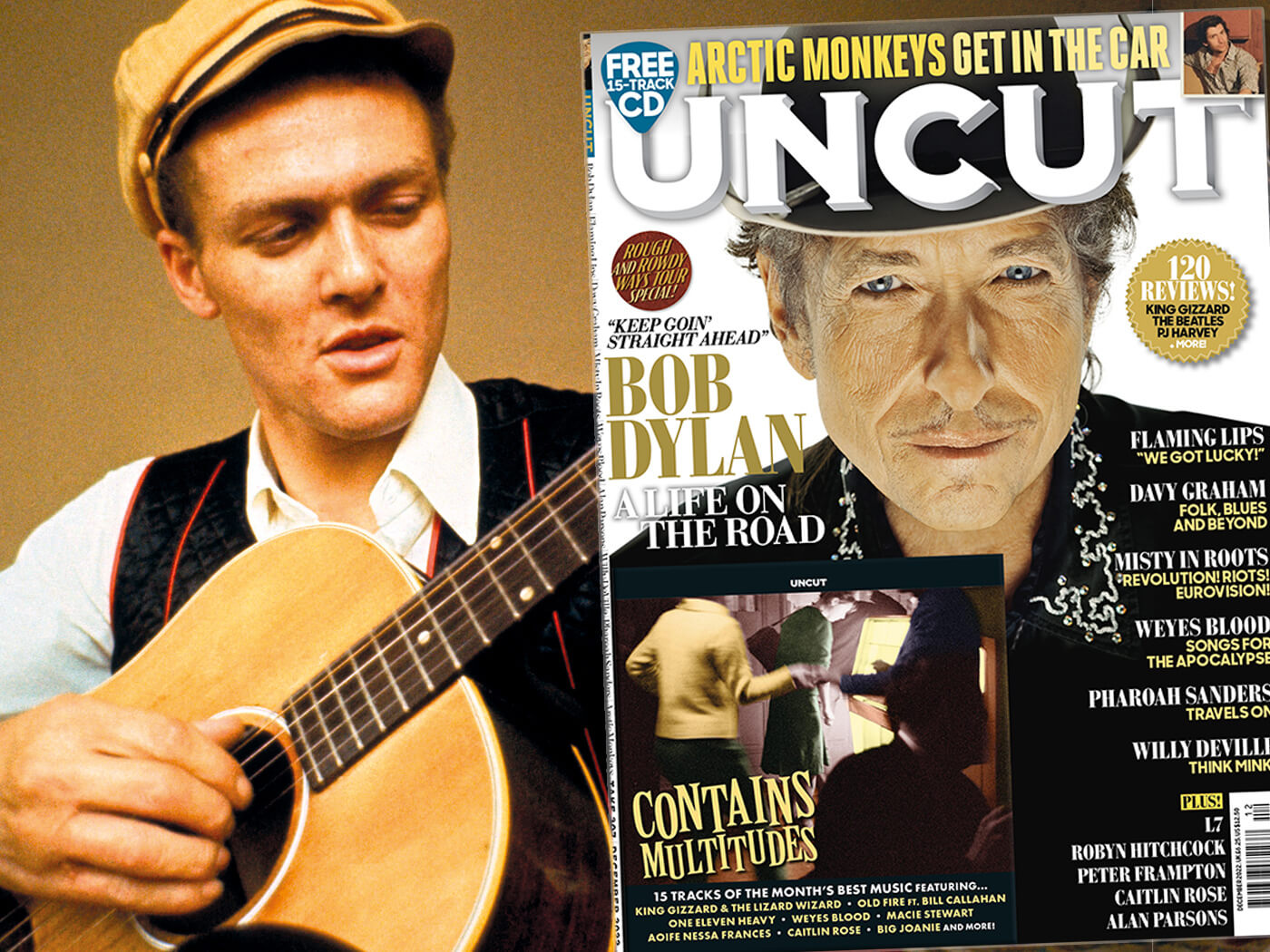Looking back 20 years later, it seems clearer now that Joe Strummer’s final three albums were each made under very different circumstances, for very different reasons; listening to them, it seems all the more remarkable how cohesive they sound, all shouting from the same street.
The group Strummer dubbed the Mescaleros began as a band in name only, but then rapidly evolved into the real deal, only to be stopped in their tracks in the worst way, just as things had started to fly. The music they recorded across their 1999–2002 lifetime – the albums Rock Art And The X-Ray Style, Global A Go-Go and Streetcore, which are collected together in this striking new set along with an album’s worth of outtakes, demos and orphaned tracks titled Vibes Compass – documents this process. You can hear it especially when you assemble it all back to back like this, as a testament of the time: a band mutating fast through different shapes, different tensions, different harmonies.
Still, despite the varying conditions that fed it, all this music identifiably comes from one single place: that unique zone instantly recognisable as Strummerville, a neighbourhood that can feel as intimate as the walk from your front door to the corner shop, yet stretches all around the world.
Strummer’s re-emergence with the Mescaleros is often seen as a new beginning, but the same weird, proud, shaggy mongrel DNA present in the Mescaleros’ sound runs through all the scattered, roaming music Strummer made during what are now routinely dubbed his “wilderness years”, the era that lasted from the chaotic end of the second, Mick Jones-less version of The Clash in early 1986, through to the release of Rock Art And The X-Ray Style in late 1999. It’s a period still to be fully assessed, but track down the fugitive recordings – the collaboration with Jones’s BAD; the defiantly trashy Latino-Rockabilly War band; his 1989 Earthquake Weather LP; assorted soundtrack work; the partnership with The Pogues – and you find Strummer developing his love for Latin, Jamaican, Irish and African styles, while checking out hip-hop and electronica, and holding fast to his belief in gutbucket rock’n’roll and beat-jazz ruminations, all elements that fed the Mescaleros vision.
Indeed, the first Mescaleros record began long before the Mescaleros, in 1994, when, still roaming, Strummer hooked up with electronic supremo Richard Norris, known for his work in The Grid. Despite The Clash’s status as rock-dance pioneers on rap-soaked outings like 1981’s “Radio Clash” (and despite further collaborations with Jones, who so enthusiastically swallowed the dance pill), Strummer remained suspicious of techno, left behind by the machines. But working with Norris, he experienced a kind of acid awakening, recognising in the rave scene a spirit similar to that Strummer was kindling around the fabled campfire he’d started building at various summer festivals as a rolling spontaneous gathering, an epiphany explicitly celebrated in one of the songs they cut, “Diggin’ The New”.
The original tracks remain officially unreleased, but set something rolling in him. Shorn of their most acidic flourishes, reworked versions of four songs from the Norris sessions would become the core of the Mescaleros’ debut, the first album to bear Strummer’s name in a decade.
Rock Art And The X-Ray Style came about when Strummer encountered Antony Genn, a player on the Britpop scene, who flat out told him: “You’re Joe Strummer. You should be making a record.” He wasn’t the first to say it, but the time was right. The album Genn produced in 1999 was hailed as a triumphant return, but in truth, compiling Norris-era songs including the keystone “Yalla Yalla”, a valedictory dub epic in the lineage of late-era Clash, alongside some even older Strummer compositions like “Forbidden City”, it was more a continuation and consolidation of the path along which Strummer had been wandering.
What it did unquestionably do, however, was pull Strummer into sharper focus than he had been in years. Suddenly he seemed comfortable with both his legacy and his maturity – it takes a man of certain domestic experience to write a love song called “Nitcomb” – and hungry for new experience. The record’s most sublime moment was its most unexpected: “From Willesden To Cricklewood”, a new song from the sessions, a waltzing paean to Friday-evening London that feels closer to Ealing movies than the Westway sound.
For Rock Art…, Genn assembled musicians including Martin Slattery and Scott Shields – like him, a generation younger than Strummer, and less concerned about the Clash legacy that sometimes weighed Strummer down. Following Genn’s departure (“I was fired for being a junkie,” he tells writer Tim Stegall in the box’s comprehensive liner notes. “I was unreliable and useless on stage”), Slattery and Shields would become the spine of the Mescaleros as the unit took to the road and evolved from Stummer’s studio session men into a bona fide band.
The difference shows clearly on their second album. Co-produced by Slattery and Shields, Global A Go-Go is at once looser and more together, a stronger, denser, earthier affair – the stewing sound of a bunker gang, people locked in together, chasing their own thing. The group had been bolstered by the addition of Tymon Dogg, one of Strummer’s earliest collaborators – they’d busked together in the 1970s – whose plaintive, extemporised violin builds strange tension against the younger Mescaleros, and sounds a distinct call back to his work on The Clash’s epic Sandinista!.
Like that record, Global A Go-Go feels less a collection of individual tracks than one overpowering whole. Influenced by his stint as DJ on the BBC’s World Service, it’s the most intense expression of Strummer’s vision of a mongrel 21st-century folk music without borders. In places – say “Shaktar Donetsk”, following a refugee wrapped in the scarf of the Ukrainian football club – it makes you feel the loss of Strummer’s voice today keenly. Elsewhere, it finds his offbeat humour in full effect – a standout statement is about takeaway food, “Bhindi Bhagee”.
When Strummer died unexpectedly during the making of Streetcore, it seemed he was still moving up, on the brink of a new shift. To round out the unfinished album, some not-quite-Mescaleros tracks were added, including “Long Shadow” and a spare reading of Bob Marley’s “Redemption Song”, both originally intended for a Rick Rubin/Johnny Cash project. But the bulk of the record, completed heroically by Slattery and Shields following Strummer’s death, hones the Mescaleros’ folk/world leaning to a sharper point, with echoes of a classic Clash sound, typified by the lead track, “Coma Girl”.
Going through this box, which comes copiously illustrated by a brilliant chaos of Strummer’s incessant doodles and scribbles, there’s the sense both of a sprawling body of powerful work and of business left unfinished. Among the 15 tracks on the Vibes Compass collection of additional recordings, the earliest, “Time And The Tide” demonstrates how strongly the through-line runs from Strummer’s “lost” years. Recorded in 1996, it became B-side to the Mescaleros’ debut single “Yalla Yalla” in 1999, but could easily be an Earthquake Weather exile. “Ocean Of Dreams”, a previously unissued Rock Art… outtake featuring Sex Pistol Steve Jones scrawling guitar over Strummer’s lament of gin-swilling suits cooking up laws in clubhouses, shares a similarly hazy vibe, the taste of smoke in the air.
The demo versions of album tracks find the songs mostly largely formed, but some differences are revealing of the process. “London Is Burning”, the original take of Streetcore’s “Burnin’ Streets” is a simpler, sweeter thing and shows how much a Clash sound was on Strummer’s mind.
The most poignant discovery might be “Fantastic”, an early iteration of the defiant “Ramshackle Day Parade” on Streetcore. As Strummer’s visionary testifying gathers pace, this earlier, more immediate performance steers the song into a different space. With the Mescaleros, Strummer may have left his future unwritten, but all these songs are like hand-written notes, pointing the way ahead.
